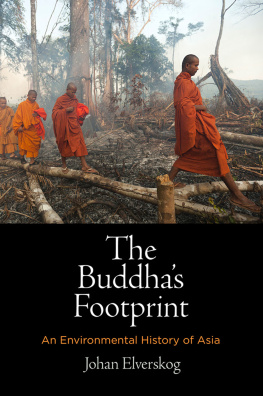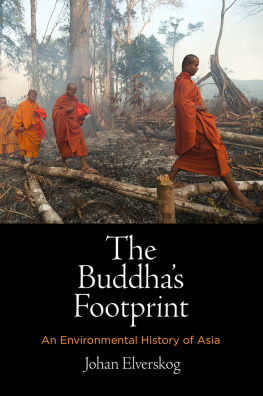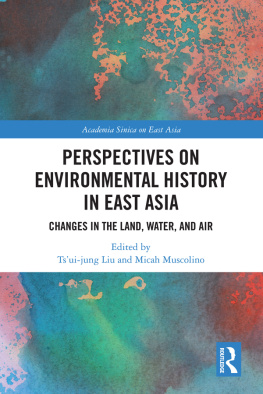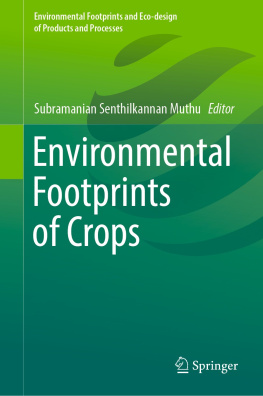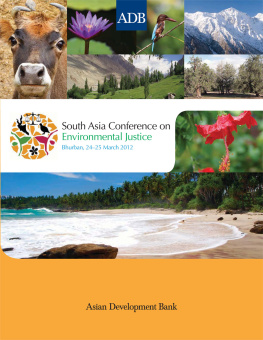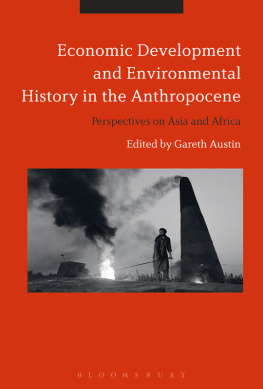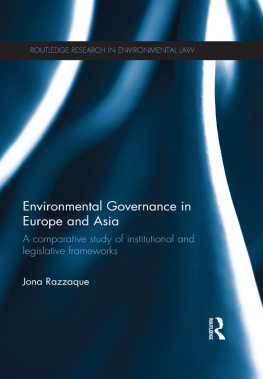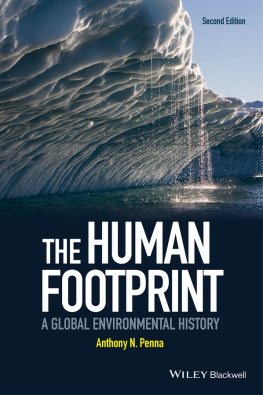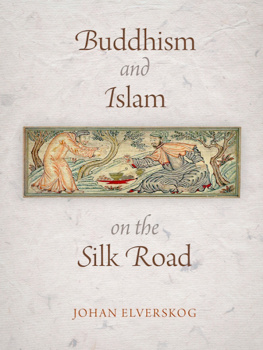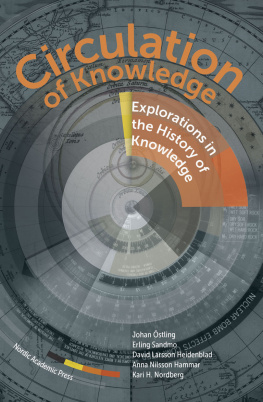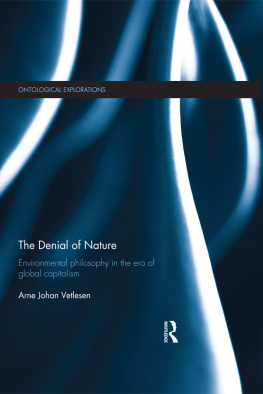Johan Elverskog - The Buddhas Footprint: An Environmental History of Asia
Here you can read online Johan Elverskog - The Buddhas Footprint: An Environmental History of Asia full text of the book (entire story) in english for free. Download pdf and epub, get meaning, cover and reviews about this ebook. year: 2020, publisher: University of Pennsylvania Press, genre: Religion. Description of the work, (preface) as well as reviews are available. Best literature library LitArk.com created for fans of good reading and offers a wide selection of genres:
Romance novel
Science fiction
Adventure
Detective
Science
History
Home and family
Prose
Art
Politics
Computer
Non-fiction
Religion
Business
Children
Humor
Choose a favorite category and find really read worthwhile books. Enjoy immersion in the world of imagination, feel the emotions of the characters or learn something new for yourself, make an fascinating discovery.
- Book:The Buddhas Footprint: An Environmental History of Asia
- Author:
- Publisher:University of Pennsylvania Press
- Genre:
- Year:2020
- Rating:4 / 5
- Favourites:Add to favourites
- Your mark:
- 80
- 1
- 2
- 3
- 4
- 5
The Buddhas Footprint: An Environmental History of Asia: summary, description and annotation
We offer to read an annotation, description, summary or preface (depends on what the author of the book "The Buddhas Footprint: An Environmental History of Asia" wrote himself). If you haven't found the necessary information about the book — write in the comments, we will try to find it.
The Buddhas Footprint: An Environmental History of Asia — read online for free the complete book (whole text) full work
Below is the text of the book, divided by pages. System saving the place of the last page read, allows you to conveniently read the book "The Buddhas Footprint: An Environmental History of Asia" online for free, without having to search again every time where you left off. Put a bookmark, and you can go to the page where you finished reading at any time.
Font size:
Interval:
Bookmark:
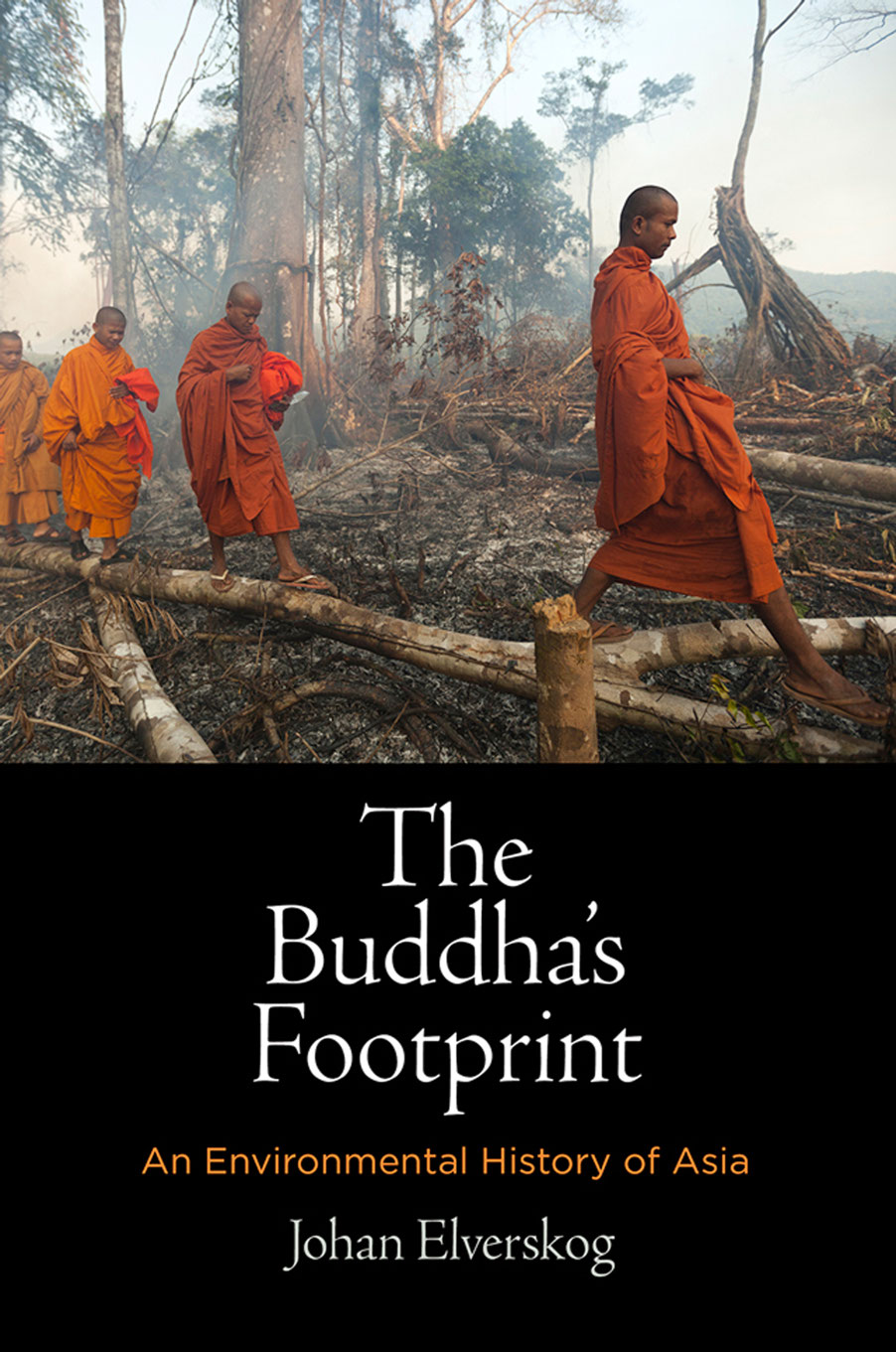

ENCOUNTERS WITH ASIA
Victor H. Mair, Series Editor
Encounters with Asia is an interdisciplinary series dedicated to the exploration of all the major regions and cultures of this vast continent. Its timeframe extends from the prehistoric to the contemporary; its geographic scope ranges from the Urals and the Caucasus to the Pacific. A particular focus of the series is the Silk Road and all its ramifications: religion, art, music, medicine, science, trade, and so forth. Among the disciplines represented in this series are history, archaeology, anthropology, ethnography, and linguistics. The series aims particularly to clarify the complex interrelationships among various peoples within Asia, and also with societies beyond Asia.
A complete list of books in the series is available from the publisher.
THE BUDDHAS FOOTPRINT

An Environmental History of Asia
Johan Elverskog

UNIVERSITY OF PENNSYLVANIA PRESS
PHILADELPHIA
Copyright 2020 University of Pennsylvania Press
All rights reserved. Except for brief quotations used for purposes of review or scholarly citation, none of this book may be reproduced in any form by any means without written permission from the publisher.
Published by
University of Pennsylvania Press
Philadelphia, Pennsylvania 19104-4112
www.upenn.edu/pennpress
Printed in the United States of America on acid-free paper
1 3 5 7 9 10 8 6 4 2
Library of Congress Cataloging-in-Publication Data
Names: Elverskog, Johan, author.
Title: The Buddhas footprint : an environmental history of Asia / Johan Elverskog.
Other titles: Encounters with Asia.
Description: 1st edition. | Philadelphia : University of Pennsylvania Press, [2020] | Series: Encounters with Asia | Includes bibliographical references and index.
Identifiers: LCCN 2019035099 | ISBN 978-0-8122-5183-8 (hardcover)
Subjects: LCSH: BuddhismAsiaHistory. | Human ecologyAsiaHistory. | NatureEffect of human beings onAsiaHistory. | Environmental ethicsAsiaHistory. | AsiaCivilizationBuddhist influences.
Classification: LCC BQ4570.E23 E47 2020 | DDC 294.3/377095dc23
LC record available a https://lccn.loc.gov/2019035099
For Sebastian


Figure 1. Three snow-leopard-skin backpacks (Bumthang, Bhutan, 1991).
Photo by author.

Everyone likes Buddhism.
Donald S. Lopez Jr., From Stone to Flesh
The origins of this book partly reside in a matching set of backpacks that I came across in Bhutan in the early 1990s. They sat on the floor of a home next to a jug of chang, homemade millet beer. They were covered with the skin of a snow leopard, and I was shocked that Buddhists would so casually carry bags made from one of the most endangered animals on the planet.
I had recently graduated from college in Berkeley, where the environmental movement was strong and the vision of Buddhism as ecologically principled was taken for granted. I had fallen for all of it. I still remember buying my copy of Allan Badiners Dharma Gaia at the Black Oak Bookstore on Shattuck Avenue and dutifully absorbing its collected wisdom about the intrinsic connections between Buddhism and deep ecology. Like other upper-middle-class white kids disillusioned with the greed is good ethos of Reagans America, I read Beat writers like Jack Kerouac and Gary Snyder and absorbed their romantic, pro-Buddhist orientation. These works drew me to the study of the Dharma, and, more specifically, to the Himalayan region, where I traveled after graduation.
The sight of these snow leopard backpacks caused no small amount of consternation since I believed that Buddhism was an inherently environmental religion. Everything I had read about the Dharmaespecially its engagement with the natural worldhad taught me that Buddhism was in tune with modern progressive sensibilities as well as deep ecology. When I saw this matching set of Louis Vuitton-like backpacks carelessly thrown to the floor, it forced me to rethink some of my basic understandings about Buddhism and what has conventionally become known as eco-Buddhism.
The development of the idea that Buddhism accords with modern ecological sensibilities has a long pedigree and is part and parcel of what scholars nowadays call the construction of modern Buddhism, which began in the nineteenth century. This project to invent a new Buddhist tradition that was compatible with modern values had many disparate authorsfrom British colonial officials to Asian nationalists, German philosophers, and Russian Theosophists. In accord with their secular ideologies, they construed Buddhism not as a religion but as a philosophy or a spiritual path that was based on rationalism and thus compatible with scientific thinking. Shorn of rituals and abstracted from communal structures, modern Buddhism became a spiritual philosophy for a secular age. This line of reinterpretation continues today with the multi-billion-dollar industry of mindfulness.
Over the last twenty years, postcolonial scholarship has amply documented how this modern Buddhism came about and in so doing has challenged many of the popular preconceptions about Buddhism. Contrary to the conventional view that Buddhist practice centers on meditation, scholars have shown that Buddhist practice has centered instead on rituals such as relic veneration, the transfer of merit, mortuary rights, and pilgrimage. Many modernizers also held the Buddha up as protofeminist, but a raft of books has argued that the Dharma has beenand continues to beprofoundly and disturbingly misogynistic. Scholars have also countered the popular notion that Buddhism is inherently rational and scientific (even in tune with modern theoretical physics) by pointing to Tibetan lamas, to take one example, who continued to insist well into the twentieth century, based on scripture, that the world was flat. Contrary to the common notion that Buddhism is focused on renunciation and antimaterialism, scholars have shown that monks and nuns were not only deeply implicated in the social and material world but also fabulously wealthy. But perhaps no topic has received as much reevaluation in this new generation of scholarship as the claim that Buddhists are pacifist or peace loving. Rather, Buddhist history has been revealed to be as soaked in blood as any other, and such violence continues today with the ethnic cleansing of Hindu Tamils in Sri Lanka and Muslim Rohingya in Burma.
And, last but not least, especially withering scrutiny has been brought to bear on the basic presumptions of eco-Buddhism. The idea that the Buddhamuch less all of the teachings relegated under the category Buddhismtaught something akin to modern environmentalism has been shown to be deeply problematic, if not entirely wrong. In canonical Buddhist texts, there is virtually nothing that accords with modern environmental sensibilities. As one leading scholar has simply put it: Buddhism is not, in essence, an ecological religion.
Font size:
Interval:
Bookmark:
Similar books «The Buddhas Footprint: An Environmental History of Asia»
Look at similar books to The Buddhas Footprint: An Environmental History of Asia. We have selected literature similar in name and meaning in the hope of providing readers with more options to find new, interesting, not yet read works.
Discussion, reviews of the book The Buddhas Footprint: An Environmental History of Asia and just readers' own opinions. Leave your comments, write what you think about the work, its meaning or the main characters. Specify what exactly you liked and what you didn't like, and why you think so.

